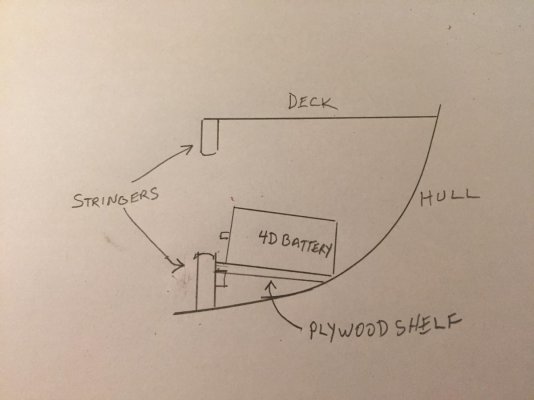Jay N
Guru
- Joined
- Oct 6, 2007
- Messages
- 502
- Location
- USA
- Vessel Name
- WESTERLY
- Vessel Make
- 1974 Pacific Trawler 37
djmarchand:
Your battery experience is illuminating. It was interesting that you provided total amps in and out in addition to years of service. Do you believe that total amps is more important in gauging service life? Since my battery monitor provides total amps, I've included the measurement. But as a gauge of service life, it's probably only relevant if I repeated the installation of an identical bank.
Attached is my analysis when I went shopping for the Third Battery Bank. The analysis didn't include the weakness that caused the early failure of the AGM bank, that of operating in a PSOC environment.
View attachment B1BankAnalysis 2013.pdf
Unseen in the background: The fact that I have a generator which must operate a minimum number of hours per year in order to keep the unit working well, an inability to heat water for house service outside of the generator and main engine, and an easy location for solar panel installation.
As with all things, there is a compromise and balance of systems based on existing components and service life.
If I were to start from scratch today, and no change in how the boat is cruised: No generator, hydronic furnace for water/space heat, and solar panels. Having these systems would dictate future battery options.
Your battery experience is illuminating. It was interesting that you provided total amps in and out in addition to years of service. Do you believe that total amps is more important in gauging service life? Since my battery monitor provides total amps, I've included the measurement. But as a gauge of service life, it's probably only relevant if I repeated the installation of an identical bank.
Attached is my analysis when I went shopping for the Third Battery Bank. The analysis didn't include the weakness that caused the early failure of the AGM bank, that of operating in a PSOC environment.
View attachment B1BankAnalysis 2013.pdf
Unseen in the background: The fact that I have a generator which must operate a minimum number of hours per year in order to keep the unit working well, an inability to heat water for house service outside of the generator and main engine, and an easy location for solar panel installation.
As with all things, there is a compromise and balance of systems based on existing components and service life.
If I were to start from scratch today, and no change in how the boat is cruised: No generator, hydronic furnace for water/space heat, and solar panels. Having these systems would dictate future battery options.

